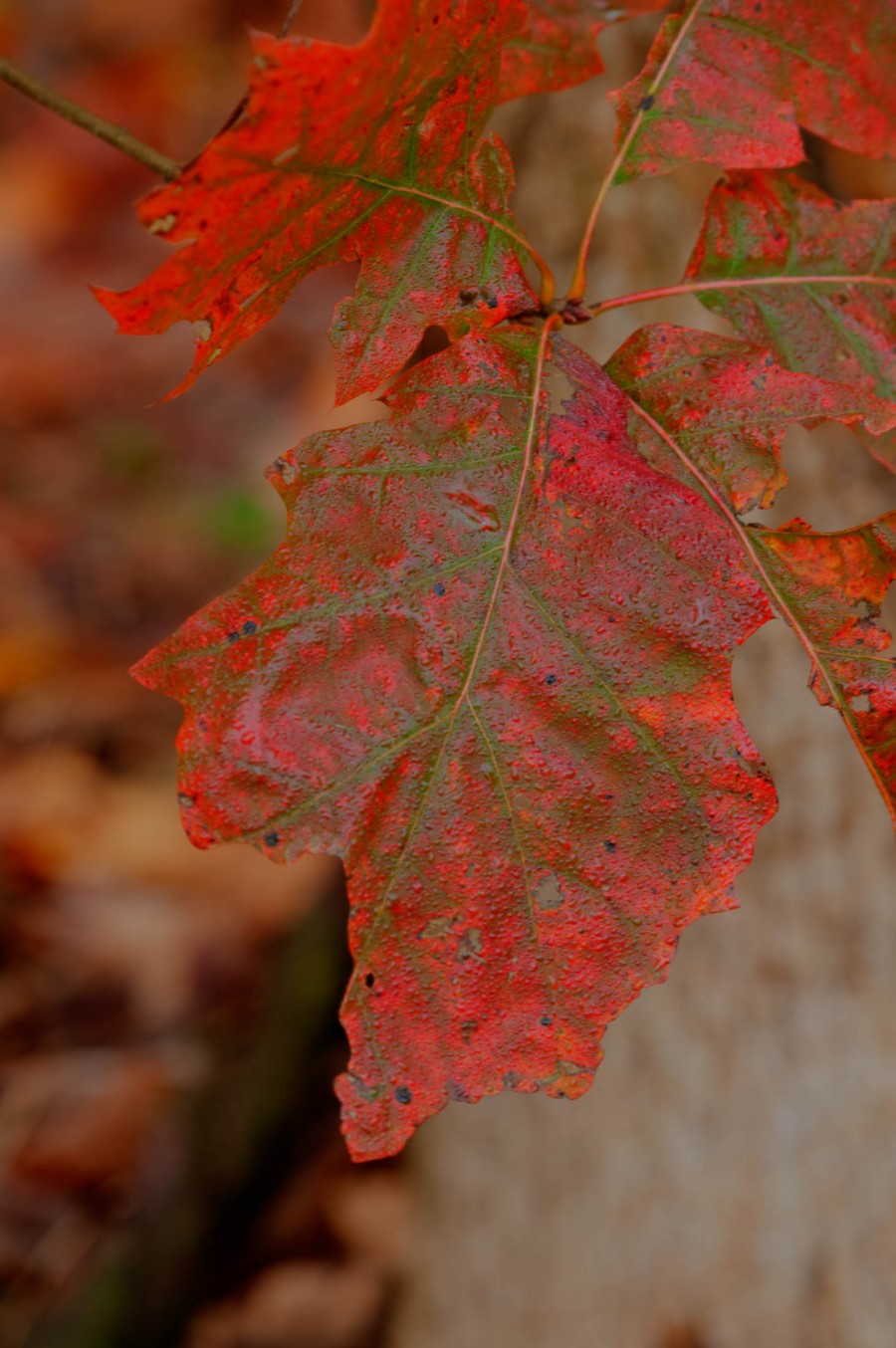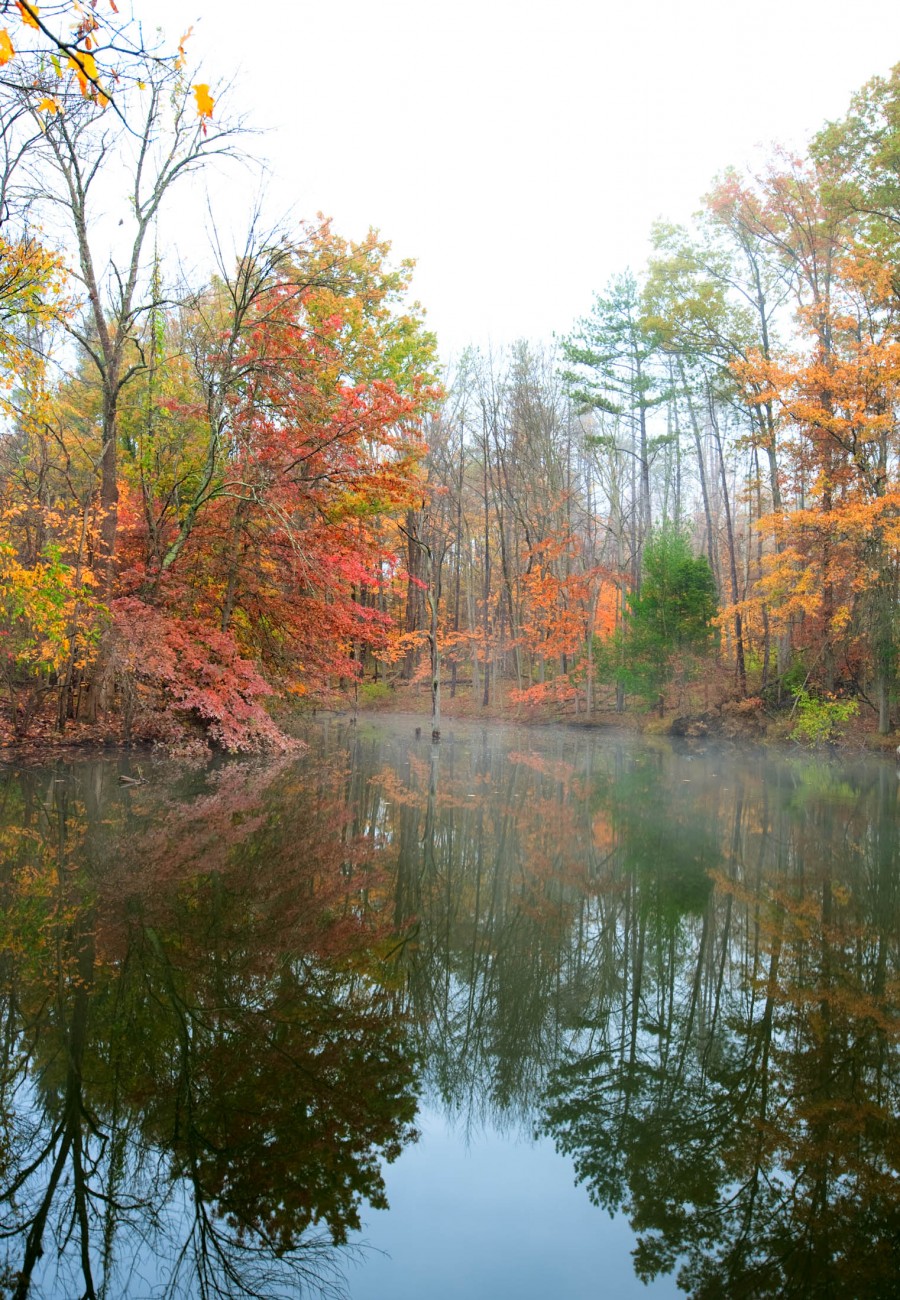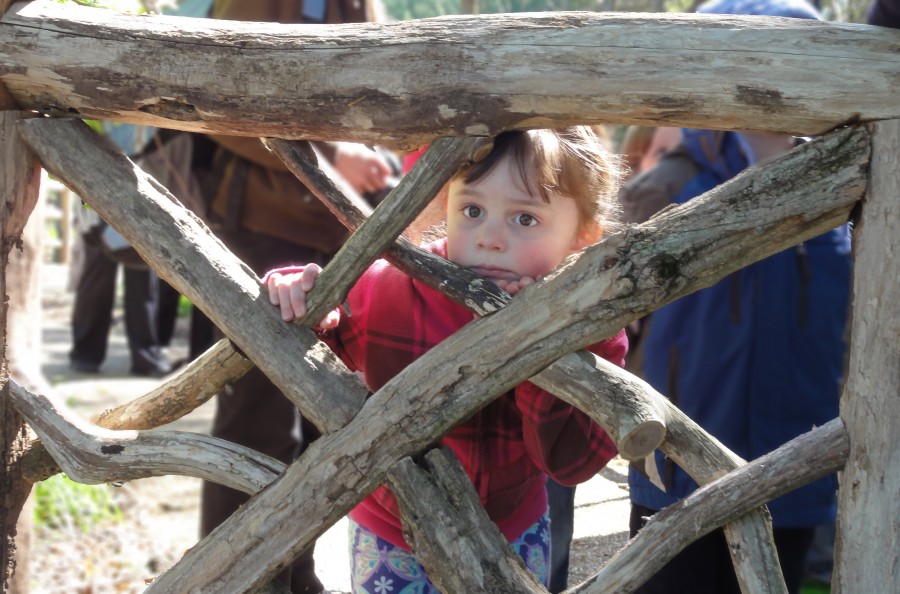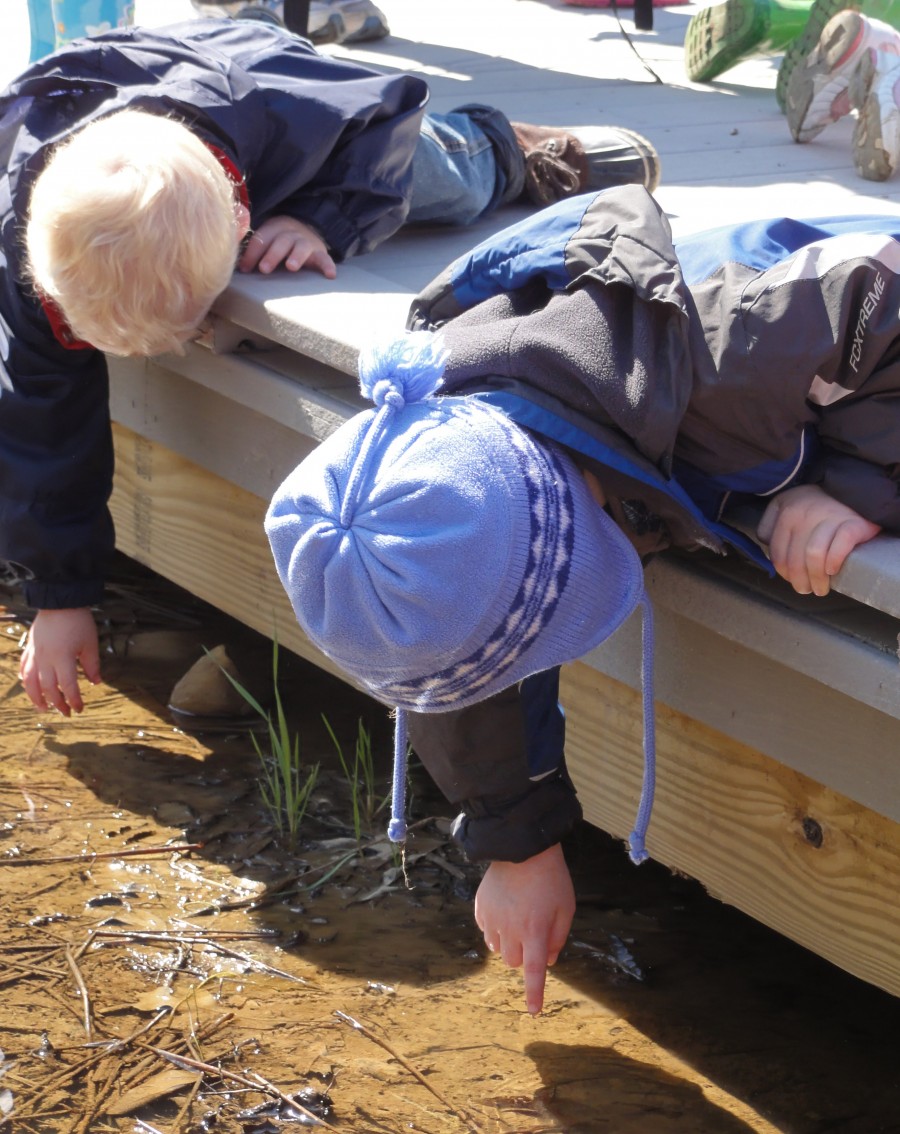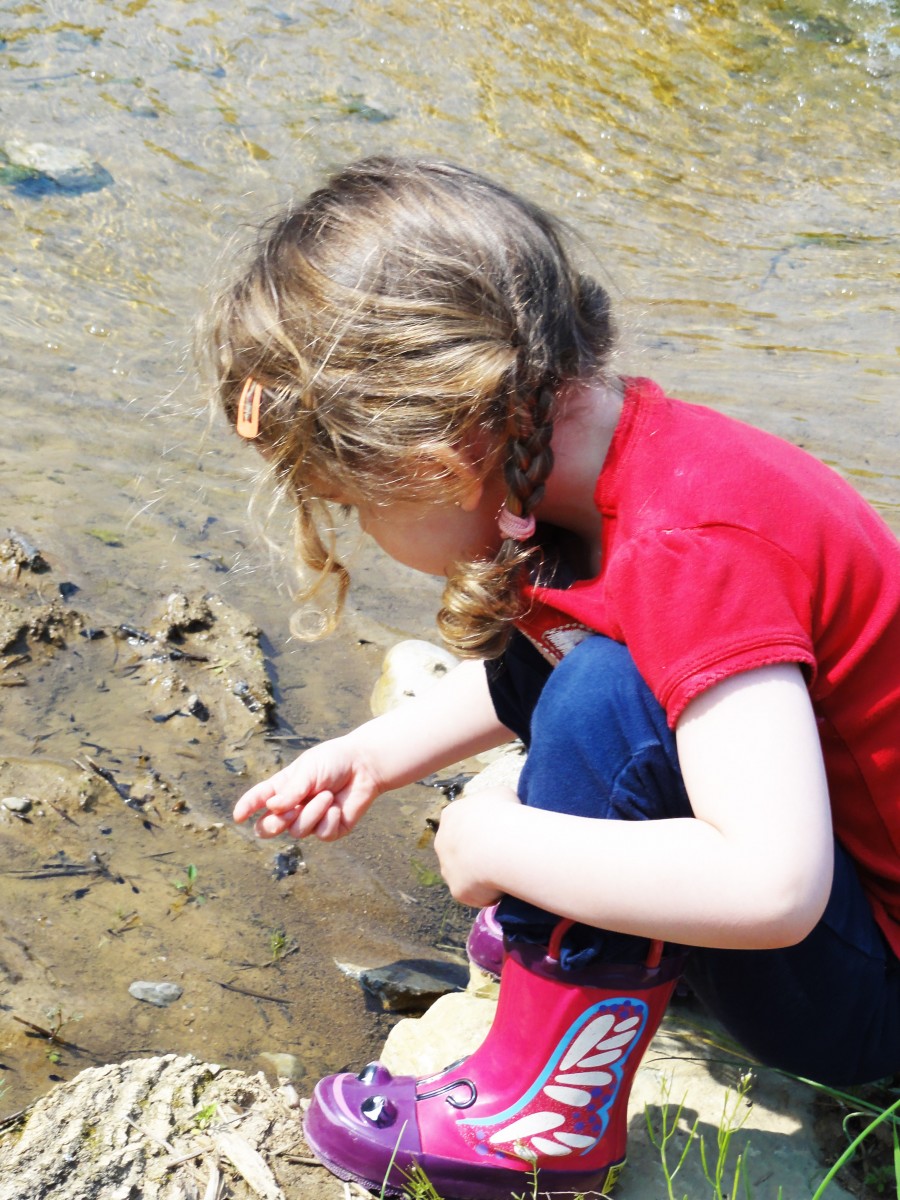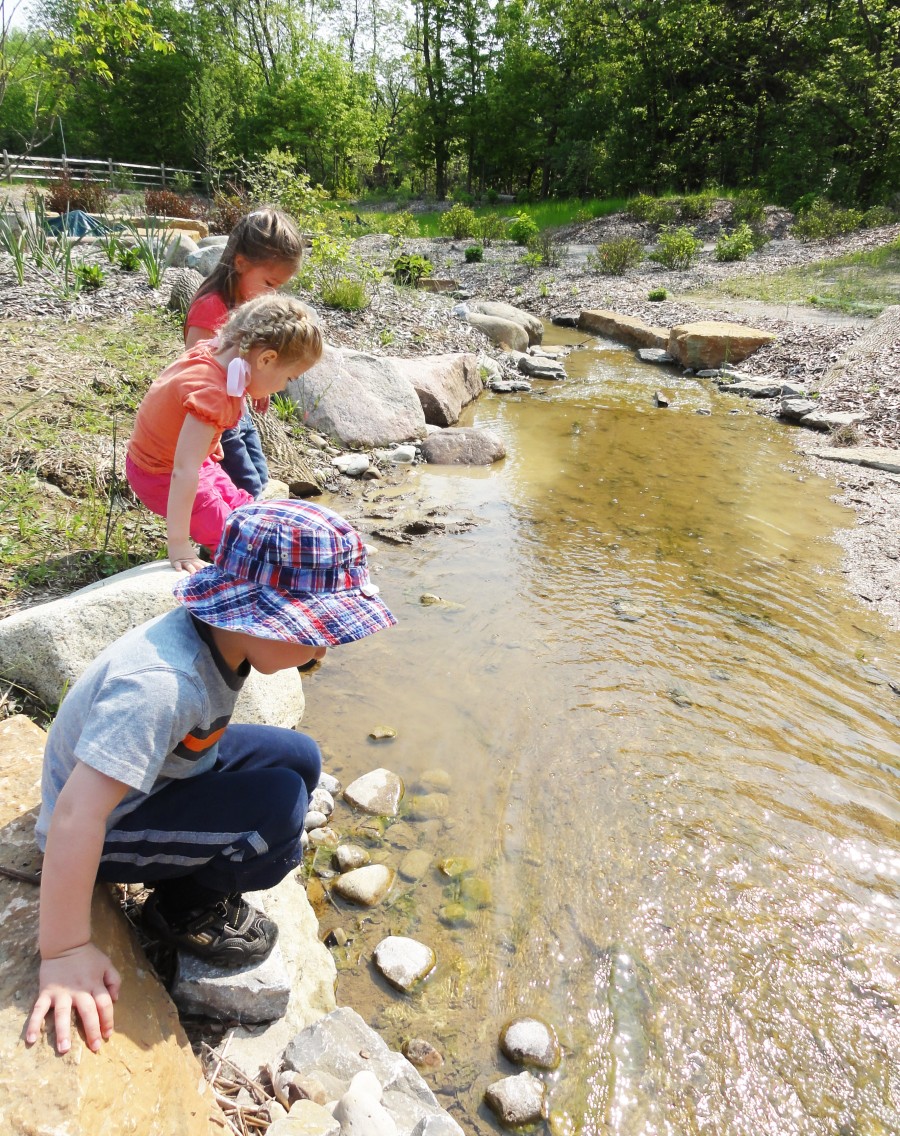Blog
The Power of Hmmm
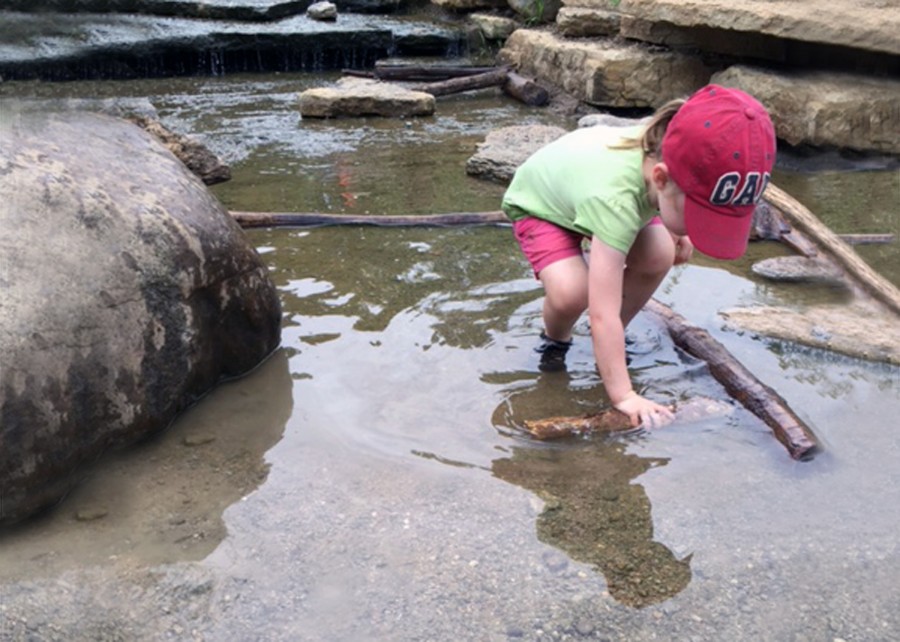
By Anne Horne, Trailside Experience Coordinator
“Mommy, will you play with me”? In my house, this request is common and it used to be followed by a quiet pause from me. It wasn’t that I didn’t like playing with my children, it’s just that when I did play with my kids, I felt all this pressure to make the time amazing. We should play something “special” and we should play something that makes this kid smarter and we should play outside and they should be getting exercise and they should be learning to share and on and on and on. This went on for a several years and it made me dislike playing. I’m pretty sure my kids thought I wasn’t a whole lot of fun either.
Things turned a corner for me two years ago when I began working in the Cincinnati Nature Center Nature PlayScape. The area is a large naturalized play space designed especially for kids and situated within the larger nature sanctuary. Ironically, my responsibility in the Nature PlayScape included teaching volunteers and staff how to facilitate nature play. Here we also faced a play dilemma similar to the one I faced at home. Staff, volunteers and families agreed that nature play was good for kids, but no one quite knew how they were supposed to play with the kids to maximize the benefit of the play.
There is a substantial body of research detailing the benefits of outdoor play for children including improved health, cognitive function and social bonding(1). In particular, I found the studies on Child-Directed Play (CDP) to be most intriguing. I discovered the best description of “Child-Directed Play” by clinical child psychologist and author, Christopher McCurry, Ph.D. McCurry defines CDP as a one-on-one play interaction between a caregiver and a child in which the child directs the play in any way he or she wishes(2). The benefits of this style of play is that the children experience enhanced emotional control and decision making, as well as close contact and bonding with their caregiver.
For the purposes of my play training, I began to marry these two fields into one more cohesive concept – Child-Directed Nature Play (CDNP). The most notable aspect of this whole idea was that the adults, including me, were going to have to stop helping children play.
So how does one play outside with a child who asks you to play, without really directing the playing?
Eliminate Questioning
As an educator, I am always questioning, “What would happen if you tried this, or did it this way, or went like this?”, etc. Questioning plays a very important role in education, but in our little self-directed play arena, questions were really a way for the adult to lead the play. For the most part, I have replaced questioning with a solid “Hmmm”? I cannot emphasize enough the power of the “Hmmm?”. It’s a great way to imply a question without giving an actual question to the child. Here is what it looks like:
Child: What should we do?
Me: Hmmm. (Pause)
Child: Mommy, what can we do out here? (child is trying again)
Me: Hmmm. I see your thinking about what to do out here.
Child: We could play with those stones.
Me: Sure. You want to check out those stones.
When we avoid questioning the child, the child then has to observe and think for themselves. My children were very accustomed to me giving them ideas. As demonstrated above, we had to have many of these ridiculously repetitive conversations before they started instinctively deciding what to do without me asking.
Control the Physical
One huge benefit of outdoor play is that children learn what they are physically capable of doing(3). However, the nature-play consortium describes the helping play problem well: “When children are in the habit of being helped to achieve physical positions they are not ready for, they grow to expect help”. Think of how we often help children by holding a hand to avoid injury. While it is our job as the adults to manage hazards and dangerous situations, allowing small risks, even if it involves a bumped knee, helps a child learn to manage risk in the future. Here is what it looks like:
Child: I want to move this rock! Help me!
Me: I see you are considering moving the big rock.
Child: It’s too heavy! It’s hurting my hands! Help me!
Me: You’re deciding what to do.
Child: I am going to pick something different. That one was too big for me.
In CDP, the adult does a lot of responding by simply reflecting back what the child says. This affirms to the child that they have full attention, but keeps the adult from interfering with the child’s choices.
Avoid Commands
The final play hurdle is that some children struggle to come up with their own ideas. This is particularly true if the child enjoys adult praise, where they will choose something to please their caregiver. The conversation with this type of child can go on for some time:
Child: What should we play?
Me: You’re thinking about what to do out here.
Child: What do you want to do Mommy?
Me: What do you want to do Jimmy?
Child: I don’t know.
Me: You’re thinking about what to do.
Child: I saw some kids building a fort.
Me: You’re thinking about forts.
Child: Can we build a fort?
Me: Yes.
Child: How should we build it?
Me: Hmmm
You get the idea. It’s painful at first and some children will become frustrated, hang in there. They will come around when they realize you are willing to play their activity of choice without judging the outcome.
Limit Praise
To allow children to be free of our approval and judgment, we try to avoid using praise in the Nature PlayScape. Recognition is a good replacement for praise. Instead of, “Great job! I love your fort!”, we might say, “ I can see you are really working hard on this fort.”
After many experiments, training and practice, we have committed to using Child Directed Nature Play in the Nature PlayScape. It’s a pleasure to watch staff and volunteers play along in the true sense of the words. In this effort, we hope to maximize the benefit to the children of their outdoor playtime.
Try this method at home and hopefully gone will be your days of play guilt. ■
To learn more about the Nature PlayScape , click here! Come and try Child Directed Nature Play with the children you love!
- The Real Benefits of Nature Play Everyday. Deanna Erickson and Julie Ernst, Nature Action Collaborative for Children, 2011. To read this article, click here.
- Child Directed Play. Chrisopher McCurry, Washington State Psychological Association, 2013.
- Nature Play Guidelines – Nature Play is Child Led Play. Clare Caro, Nature Play, 2014. To read this article click here.
Anne Horne is the Trailside Experience Coordinator at Cincinnati Nature Center. Formerly, Horne was Children's Program Director at the Audubon Naturalist Society, and a Professor at the University of Maryland.
